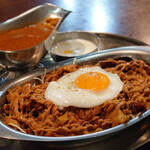
インド定食 ターリー屋 目黒店
Indoteishokutariya
3.03
Meguro
「India cuisine」
1,000-1,999円
--
Opening hours: 11:00-23:00(L.O.22:30) Open Sundays
Rest time: Open daily (except for year-end and New Year holidays)
東京都品川区上大崎2-17-4 美都ビル 2F
Photos
(20)
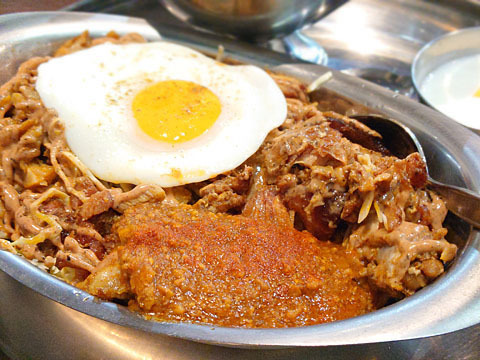

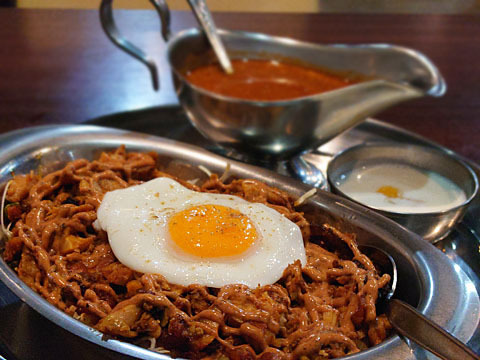
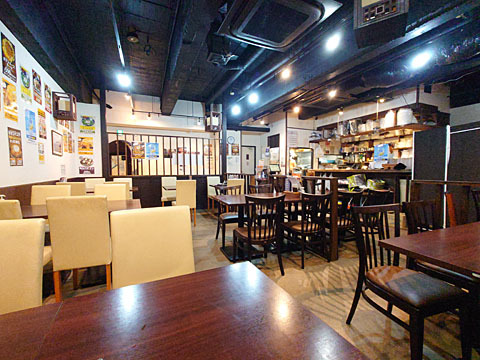
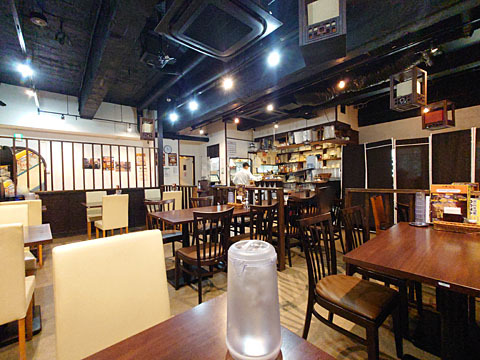
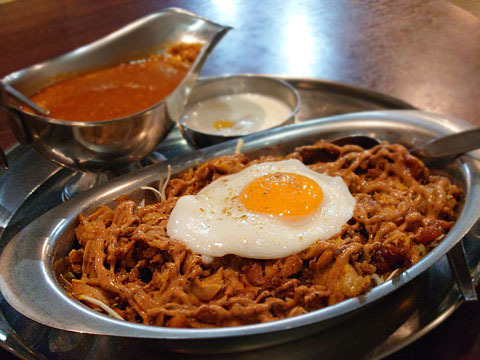
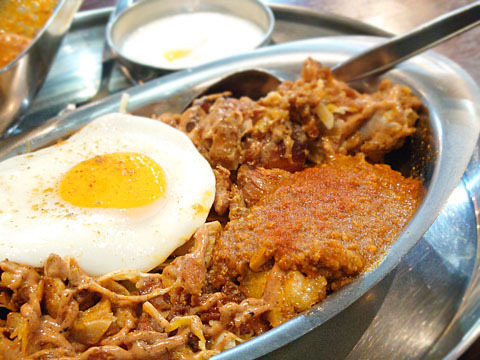

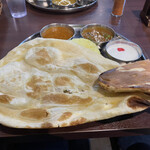

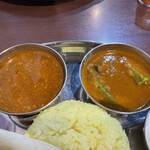
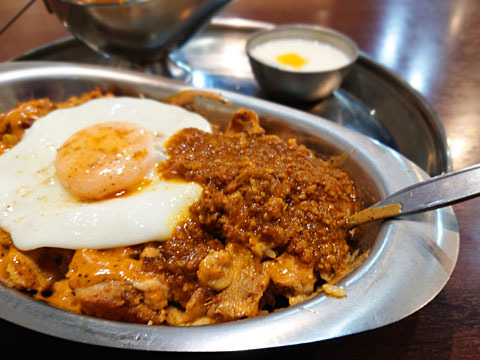
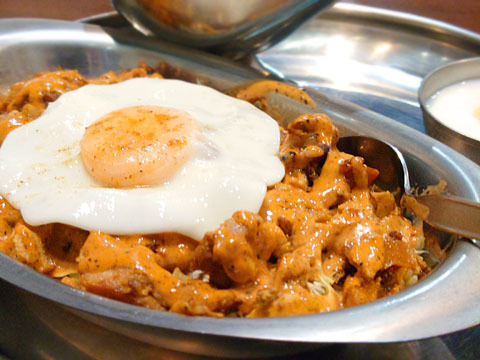
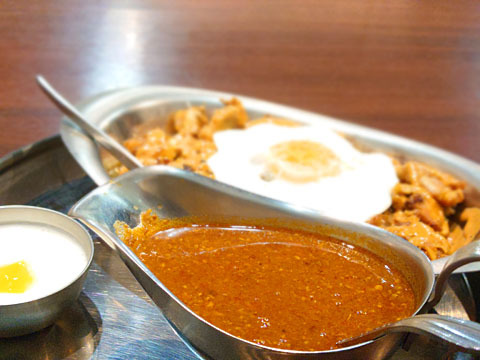
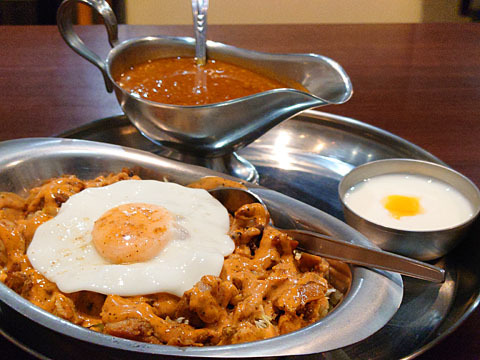
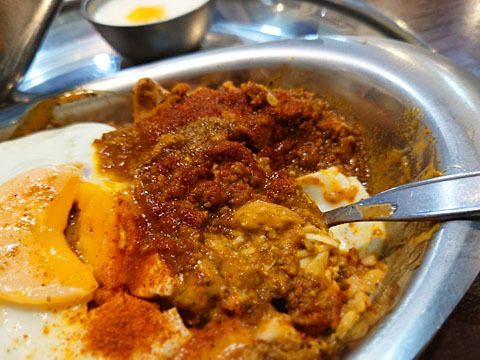
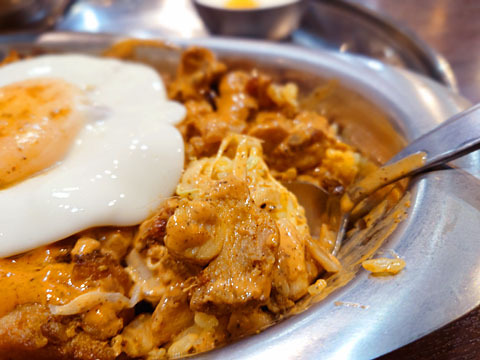
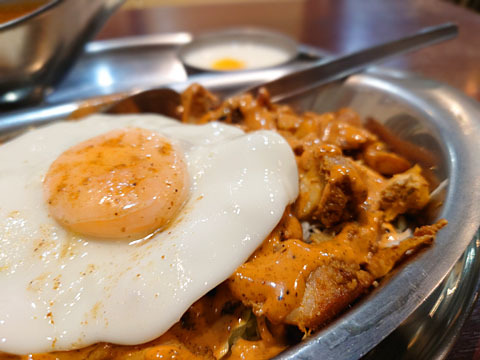
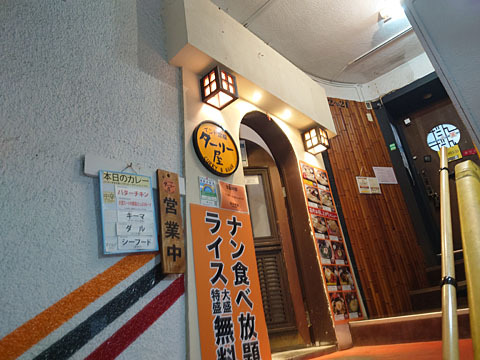
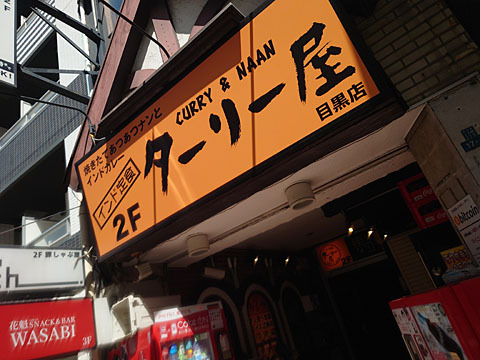
Details
Children
child-friendly
Payment Method
No credit cards
Electronic money is not accepted
Number of Seats
40 seats
Private Dining Rooms
None
Smoking and Non-Smoking
No smoking at the table
Parking
None
Comments
(18)
chineko
3.50
Yesterday, I had some errands near Meguro, so I decided to have lunch in Meguro. There are many different restaurants in Meguro, but I remembered how quiet it was when I went to a curry shop before, so I went back to the same curry shop. However, after 1 pm, the place suddenly got crowded, and by the time I left, more than half of the tables were filled. It's quite popular, it seems... (@@;) This shop is great because even if you're dining alone, you can enjoy curry in a set meal style, but that also makes it hard to choose from the menu. I couldn't decide between the Chicken Pakora set meal and the Chicken Kebab Keema set meal, but then I remembered I had been eating a lot of fried food recently, so I went with the Chicken Kebab Keema. (laughs) The rice is a small portion of 200g, but it comes with plenty of cabbage, so it's quite filling. And the Chicken Kebab is generously arranged, making it quite a sight. The Keema curry is smooth and watery, and it comes with a sunny-side-up egg, which is a Japanese touch. The Kebab has a mild spice level but still has a nice aroma, making it a proper Kebab. You can enjoy various combinations like eating just the Kebab, having it with rice, eating just the curry, or mixing the curry and Kebab. The spiciness is definitely lacking, so the chili pepper on the table is a lifesaver. A smooth and drinkable curry. I really like the curry at this curry shop. ("2nd week of April~!")

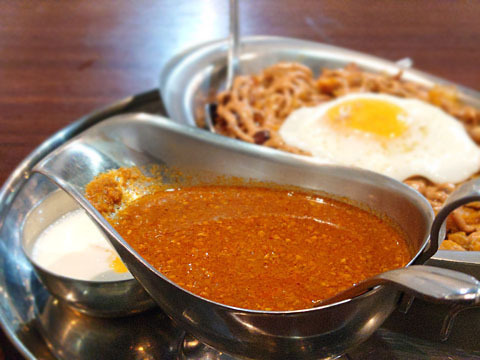


キハ80
3.00
I went to a Taliya restaurant near Meguro Station and had the Chicken Kebab Keema set meal. Under the chicken kebab, there is turmeric rice. It comes with a fried egg, soft drink, and yogurt. I ordered a mango lassi as my soft drink, which is an additional charge. The portion is quite large, so you will be full. It was very delicious. #Taliya restaurant #Taliya Meguro branch #Chicken Kebab Keema rice set meal #Chicken Kebab Keema set meal #Kebab #Chicken #Chicken Kebab #Fried egg #Yogurt #Mango lassi #Lassi #Keema curry #Curry #Currygram #Curry lovers #Curry lover #Indian cuisine #Gourmet #Gourmet walk #Gourmet lovers #kebab #chicken #chickenkebab #keemacurry #curry #currylovers #currylover



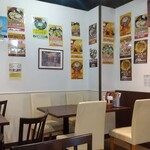
chineko
3.50
For a quick bite to eat, I went to a "Thali" restaurant in Meguro for lunch. It's an Indian curry restaurant where you can easily eat alone. Unlike the one I usually go to in Shinjuku West Exit, this one had spacious table seating. It was nice to relax there. I ordered the Chicken Kebab Keema set with less rice than usual. Even with less rice, it was still quite a lot. I chose the spicy sauce for the kebab. The Keema curry was light and plentiful. The kebabs were soft with a hint of cumin. Eating the kebabs with rice is good, but it's even better with the Keema curry poured over it. Of course, it needed more spiciness, so I added plenty of chili powder from the table. The curry was easy to eat, so I finished the kebabs quickly. I was satisfied with a full stomach. ("Start with curry, end with curry!")




meru9
3.00
You can try the rare Gorgonzola cheese naan here. I arrived at noon on a weekday and found that I was the only customer. A few more customers came in later, but it was only about 70% full. I ordered two curry sets: Jhinga Masala (shrimp) and Seafood (scallops). Although the curries were supposed to contain scallops and shrimp, there was only one piece of seafood in each, which was a bit funny. The taste was like typical Indian curry, delicious in a normal way. The highlight of this place is the Gorgonzola cheese naan, which can be added to the set menu for an additional 380 yen (excluding tax). It is filled with plenty of cheese all the way to the edges, and it comes with honey. The lunch menu is not particularly different from the dinner menu, and the curry selection is limited, changing daily with the "curry of the day" displayed outside the shop. Takeout is about 10% cheaper than dining in, so I often get takeout. It's a bit disappointing that they only accept cash and don't even take PayPay.
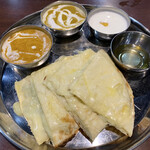
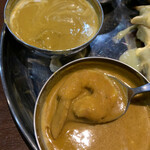
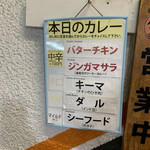
@ぺー助
3.30
There is an Indian set meal restaurant near Meguro Station. I used to go to a tandoori restaurant in Shibuya often, but I noticed there is one in Meguro too. It's not particularly delicious, but the casual atmosphere is somehow appealing. I also like that there are plenty of toppings available.
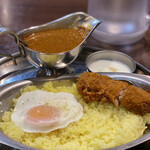
kavk36
1.00
I arrived at the restaurant at 12:30 PM and there was one customer already there. Soon after, about 4 more people arrived. I ordered the luxurious set for 1738 yen including tax. The food arrived shortly after ordering. The cheese naan had a good taste. The salad was delicious. However, the curry and rice had a very strange taste and I couldn't eat it.
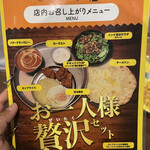
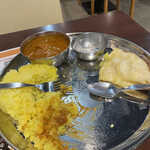
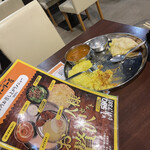
まめぞう
3.50
The beautiful Mitsubiru building, which seems to be crumbling, has been maintained by putting tenants in continuously despite some complaints. The second floor used to be a Chinese restaurant called "Yuyuan" in Adachi-ku, Ayase. After relocating, a new Chinese restaurant called "Ko Nan En" opened. It was delicious, but later it became a gathering place for smokers. After that, a mysterious restaurant called "Niku Bar Shurasuko" opened, serving Indian curry and Shurasuko meat. In July 2020, a restaurant called "Tariya" opened. Tariya has a small main store near Nishi-Shinjuku Station on the Marunouchi Line, and has expanded to over 30 stores in Tokyo, Kanagawa, Saitama, and Osaka. When you enter the restaurant, you will see Nepalese people, so you might think it's run by Nepalese people, but it's actually run by Japanese people. The founder, Koshin Yoshikawa, worked for a long-established food distribution company, Meiji-ya, after graduating from university. After leaving the company at the age of 28, he started a promotional business that involved sending mannequins for tasting sales in food sales areas with low initial investment. The company quickly expanded its business thanks to the hospitality he learned at Meiji-ya, reaching an annual turnover of 1 billion yen within 10 years of its founding. However, the profit margin was low, and the work was tough. The sales plummeted rapidly, and many talented employees left, leading to a debt restructuring and a change in business. With the remaining funds, he took a chance with Tariya. Indian cuisine was chosen as it required few staff and surprisingly had few competitors if the focus was right. The curry at each store is made using a central kitchen system, and the cooking is done by Nepalese people. About 40 Nepalese people work as regular employees. The first Nepalese person was introduced through a store where Yoshikawa had trained before the opening, and others joined through introductions from someone. All of them work in the store, and they are either relatives, friends, or acquaintances from the same region, so they share the same religion, culture, and values, providing a sense of security for them to work in a foreign country. I have been seeing Tariya restaurants frequently in Tokyo recently, but this was my first time visiting one. When I went upstairs, the atmosphere was exactly the same as when it was Ko Nan En, as if it had just opened with complete renovations, except that it had become non-smoking. I ordered the classic "Tariya set meal" (979 yen), which includes two types of curry, naan, rice, fried egg, and yogurt. Naan is all-you-can-eat, and rice can be served in a large portion for free. I chose chicken keema and okra and eggplant bindi baigan for the curries. The restaurant was not crowded, but there were many Uber orders coming in. Soon, the plates arrived. The giant naan was not hot, but my fingers were sticky. I later cleaned my fingers with alcohol for infection prevention. The keema was spicy, and the bindi baigan was medium spicy, but even for someone like me who is not good with spicy food, it was okay, more like a mild spiciness. Both had plenty of umami flavor that Japanese people like. In authentic Indian and Nepalese curries, the taste is often light with just spiciness, but here, the amino acid-based umami was abundant. I was full with the naan and turmeric rice, and I didn't need a refill, as the naan alone was sufficient. Payment was cash only, so I paid 979 yen and finished my meal.
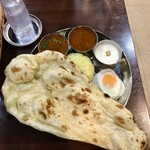


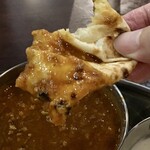
チャッピー神保
3.00
Nice to meet you, I'm Chappy Jinbo. I would like to recommend Tariya Meguro, located at 2-17-4 Kami Osaki, Shinagawa-ku. Their phone number is 03-6417-4308. The nearest station is Meguro Station. They offer delivery through Demae-can and Uber Eats. This time, I visited during lunchtime and chose the Chicken Kebab Keema Rice set meal, which is exclusive to the Meguro branch. The price is 1089 yen including tax. You can get a free large or extra large serving of rice. The set meal allows you to enjoy both Chicken Kebab and Keema Curry at once, offering a good value. While the curry may not be dramatically delicious, it is safe and satisfying. Overall, I was pleased with the portion size and would recommend it. That's all for now.
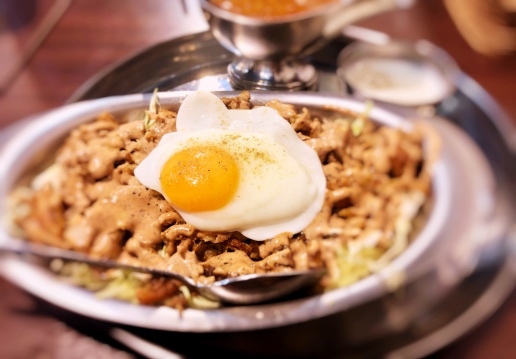
kiicyan
3.50
The set of cheese naan and butter chicken curry with free refills of naan and rice is great! The flavor is on the sweeter side, which is perfect for those who don't like very spicy food like me. It's a bit hard to find as it's located on the second floor up a hidden staircase, but it's cheap and convenient for a quick stop. However, for those who enjoy spicy food, it may not be satisfying enough.
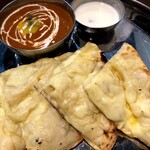
耶馬英彦
3.00
In August 2020, it seems that the Herb Garden Meguro store, which was previously in the same location, closed down and this new store opened. Although I had never visited the previous store, I decided to try this new place. I ordered the Keema Katsu Curry set for 890 yen (979 yen after tax) to try something different from the usual curry and naan. The dish was served in 6 minutes and consisted of turmeric rice topped with a fried egg and chicken katsu, with Keema curry on the side. The menu mentioned that the chicken katsu was Tandoori chicken katsu, which was crispy and tender, although a bit lacking in flavor on its own. However, when eaten with the Keema curry, it was delicious. Unfortunately, the turmeric rice was not as tasty. In my opinion, Japonica rice tends to have larger grains with higher quality rice being bigger in size. Sushi rice, for example, usually has large grains. The rice served at this restaurant was quite small-grained Japonica rice, slightly watery and dry. It didn't mix well with the Keema curry. It seems like they may not handle rice well, so ordering naan might be a better choice here. Overall, I would rate the taste of the Keema curry and Tandoori chicken katsu at 3.5, but considering the rice quality, I would give an overall rating of 3.0. I should have just ordered the naan as usual.

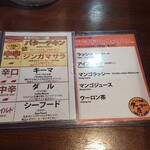
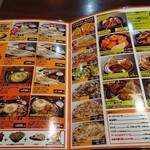

Testarossa
3.20
Located on the second floor of a building in Meguro, this Indian set meal restaurant opened in July 2020. I visited for dinner on a weekday and the upbeat sounds of Indian pop music filled the air. I tried the "Chicken Kebab Keema Rice Set Meal" (1,089 yen), which is a special menu only available at the Meguro branch. You can choose from keema curry, bindi baingan (okra and eggplant), vegetable, butter chicken (+110 yen), or mutton (+110 yen) as the curry option. I went with the keema curry. Everything comes on one plate. The chicken kebab comes with a choice of mild, medium, or spicy kebab sauce. It is served on a bed of rice with cabbage, kebab, and a fried egg on top, all topped with the keema curry. The mix of kebab and keema curry creates a unique and delicious flavor. The portion of rice is quite generous, and even the medium size feels like a large serving. The keema curry, served separately, is a flavorful minced meat sauce. With the ample amount provided, opting for a large serving of rice or even extra-large should ensure you won't run out. If you're craving kebabs but can't find a kebab cart in the bustling streets of Meguro, head to this restaurant.
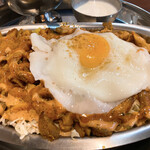
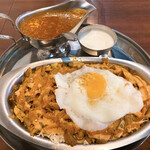
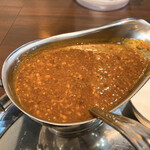
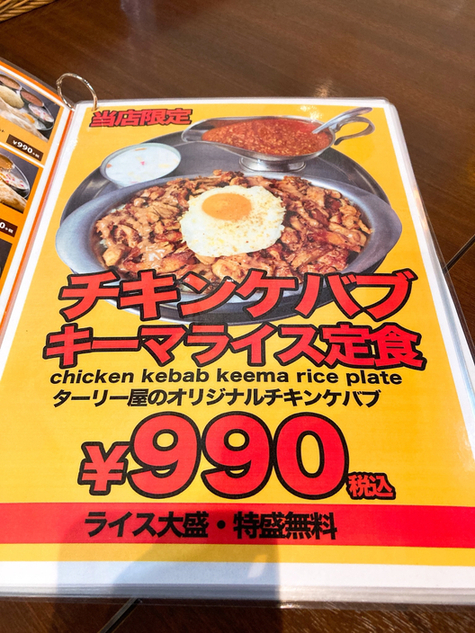
Testarossa
3.10
A new Indian curry set meal restaurant on the 2nd floor of a building in Meguro. Opened on July 1, 2020. Visited for lunch on a weekday. Discovered it while walking nearby, as it had just opened. It seems like it used to be an ethnic restaurant before. Upon researching, it appears to be a chain with over 30 locations in Tokyo. Opening during the difficult times of the pandemic. Located in a small, somewhat pink district. Found on the left side after climbing the stairs. The space is spacious with 40 seats, which might be challenging to fill. The staff seems to be Indian. Upon seating, there are recommendations on how to enjoy the food posted on the wall. They promote unlimited naan, large portions of rice, and free extra portions. The "Thali Set Meal" (979 yen) includes two curries, fried egg, yogurt, naan, and rice. Key points: - Keema Curry: Spicy and pairs well with rice. - Seafood Curry: Sweet white butter sauce with small shrimp and scallops. Pairs well with naan. A recommended way to eat is to mix the two curries and pour over rice, then mix in the fried egg. Mixing the curry enhances the flavor. - Naan: Huge! Free refills, but finishing the second piece might be challenging unless you have a big appetite. - Rice: Choose from medium (150g) or large (250g). Firm texture that complements the curry. - Fried Egg: Hidden under the naan. Soft-boiled. Dinner menu is the same as lunch, offering hearty set meals. Cash only, so be aware.
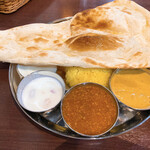
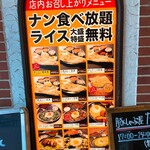
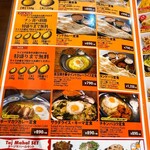
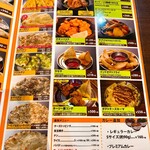
ズキちゃん
3.50
Indian curry set meal Keema / ¥690- All-you-can-eat naan. The Keema curry is flavorful and spicy. The naan is crispy and chewy with plenty of ghee.
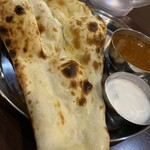
norwa621
1.50
"Nan, Keema, Fried Egg, Lassi, Saffron Rice paired with Butter Chicken"
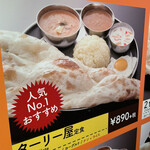
M.I.K.I
3.40
The kebab rice with keema curry was simply delicious.
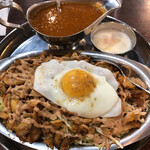
ka2ka2pm
3.40



42027f
4.00
It was good that it was properly sweet.
a-ari
5.00
The service is excellent...
Email Login